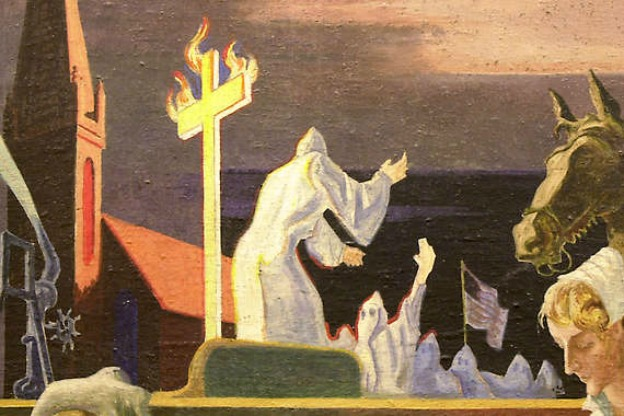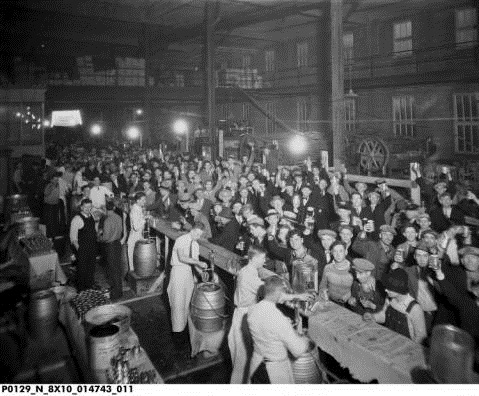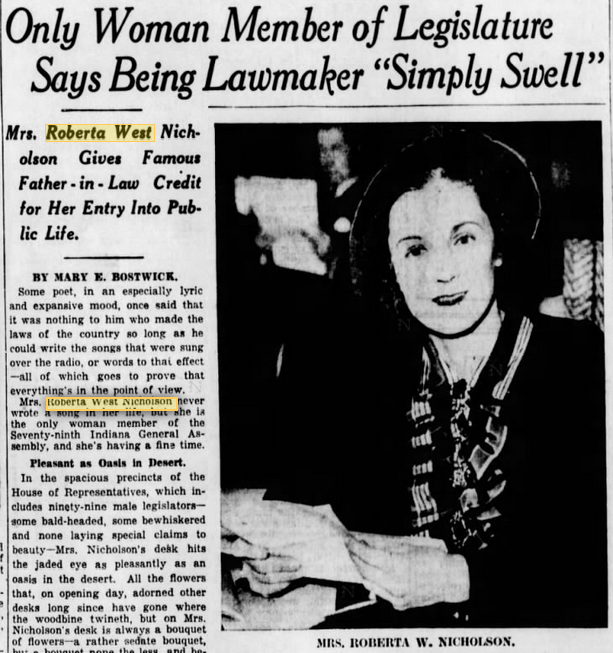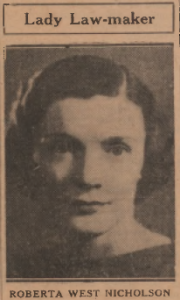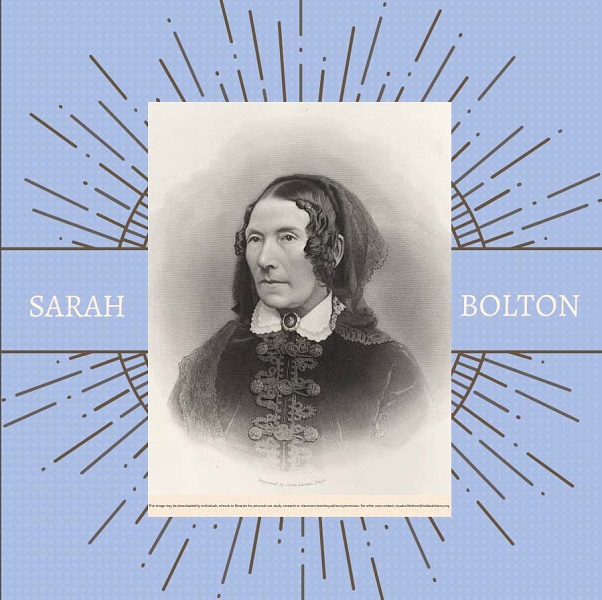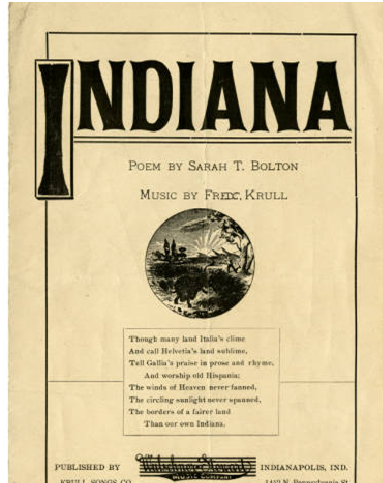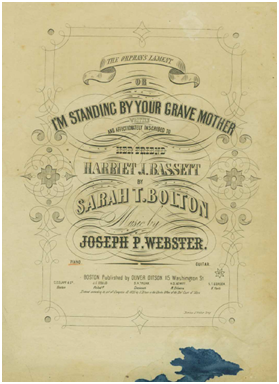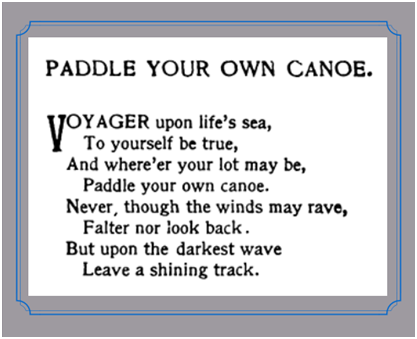By the start of the twentieth century, Hoosier suffragists were experienced political actors. They had spent decades exerting pressure on public officials to end discriminatory practices against women and lobbying for the vote. They delivered speeches and petitions to the Indiana General Assembly and the United States Congress. They marched, organized, lobbied, and strategized. But their success was limited because of one infuriating Catch-22: the women trying to gain the vote were often ignored by politicians because they were not voters. It became clear that they needed to change public opinion on a grand scale. They did this through broad public actions like demonstrations and parades, but they were not above the occasional publicity stunt.
During the summer of 1912, the women of the Equal Suffrage Association (ESA) had become “masters of publicity,” according to historian Dr. Anita Morgan.[1] The stakes were high. Governor Thomas Marshall was attempting to introduce a new state constitution with stricter voter requirements that would continue to exclude women from the ballot box. In response, the ESA worked to expand its organization, adding labor and African American branches, and reach women across the state.[2] In the spring and summer of 1912, during the weeks leading up to the state convention, the ESA got especially innovative.
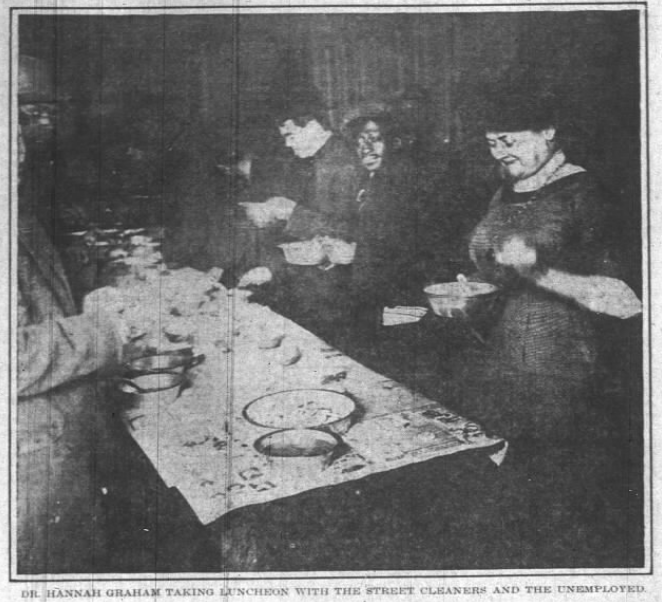
In May, physician and ESA leader Dr. Hannah Graham of Indianapolis invited sociologist and suffrage lecturer Elizabeth N. Barr of Topeka, Kansas to speak at an upcoming meeting. Barr planned to deliver her speech, “Active and Passive Opposition to Suffrage.” Barr hoped this would draw some anti-suffragists to the meetings as she was “anxious to debate with some person who is opposed to woman suffrage.”[3]
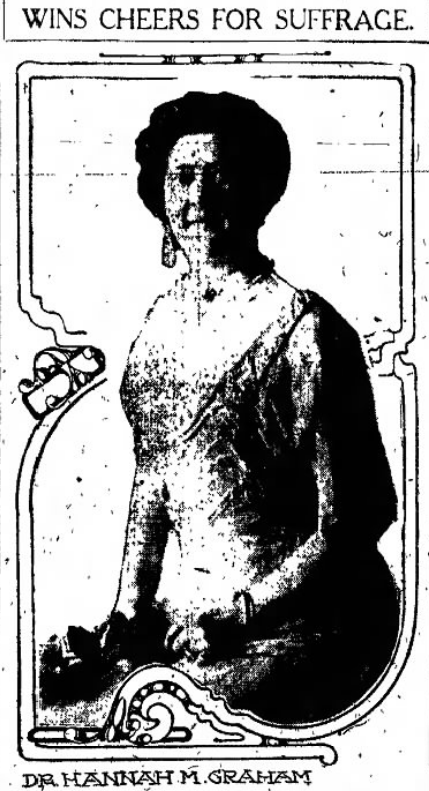
Determined to draw press attention to this important talk, Dr. Graham came up with a creative strategy. She proposed they charter a hot air balloon to carry Barr high above Indianapolis and drop suffrage buttons to curious onlookers below. Barr agreed to the stunt, “declared that all true suffragists are ‘game,’ and was glad to prove the contention to the public.”[4]
Dr. Graham and other ESA leaders followed the balloon through the city in a parade of automobiles, drawing even more attention to their campaign. Her strategy worked and the press reported widely on the “Balloon Jaunt,” as the Indianapolis Star called it.[5] Fortunately, the stunt didn’t overshadow their message as newspapers reported on the upcoming meeting and Barr’s speech, as well as Graham’s goals with the airdrop:
Dr. Graham said the association encouraged the flight in order to show that woman was capable of entering any sphere of life, even a high one.[6]
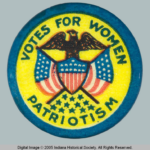
Interestingly, the balloon, the Duesseldforfer II, was donated for the trip by the Indianapolis Brewing Company. This is notable as some suffrage organizations were also prohibitionists, an alliance that had regularly hurt the suffrage cause throughout Indiana history. The ESA was likely making a public statement that they were working only for the vote not for prohibition. They likely hoped this public collaboration with a brewing company would draw people to their cause who supported women’s rights and enjoyed their beer.

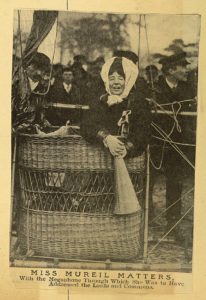
Dr. Graham and ESA leaders were evidently studying the tactics of other suffrage organizations around the globe, as there were a few recent precedents for the balloon stunt. In 1909, Australian-born British suffragist Muriel Matters chartered an airship (similar to a blimp) to fly over West Minster during a procession of the members of Parliament led by King Edward VII. Her balloon, branded with a large “Votes for Women,” was blown off course and did not make an appearance over Parliament. Nonetheless, Matters garnered an enormous amount of publicity for the Women’s Freedom League.[7]
The ESA’s May 1912 success in drawing press attention with the balloon air drop would have been on their minds as they prepared for their statewide conference in June.

To the Progressive Women of Indiana, Greetings:
On June 28 and 29, 1912, the equal suffragists of Indiana will assemble in state convention at Logansport, Ind. To report the progress of the woman suffrage and to confer upon existing conditions and the best methods to work in the state.
Since the purpose of the Indiana Equal Suffrage Association is to secure for the women of the state the right to vote, we have called this convention.
Six of the states of the Union have granted full suffrage to women, and many of our neighboring states are in the midst of active campaigns, but Indiana still refuses to allow her voters to consider this question.
This will not be a convention of an exclusive class, but a democratic meeting of all classes.
Come and take part in the discussions and give the stimulating influence of your presence to the work.
Women of Indiana, this is your organization and this is your work. Come and show that you are no longer satisfied to be ignored and that you insist in having a voice in this government.[10]
The ESA’s hard work paid off. Over 50,000 Hoosiers watched the suffragists parade through the streets of Logansport and “every business house was beautifully dressed in suffrage colors.”[11] In addition, “the convention was widely noticed by the press” and other suffrage organizations. In fact,that September, Wisconsin suffragists hired a “great air pilot,” who “scattered suffrage flyers from the airship which he took up into the clouds at the State Fair in 1912.”[12] The ESA’s success with their suffrage circular airdrop may have been their inspiration.

The ESA’s much anticipated state convention was progressive and productive. The organization committed to further political action. Dr. Graham reported to the large convention audience that ESA representatives recently attended the Democratic State Convention to pressure the party to add a women’s suffrage plank to its platform. Unfortunately, only “one or two of them thought of putting such a plank in the platform worth considering.”[13] In response, they would be attending the Republican State Convention to again advocate for a suffrage plank. Dr. Graham called on ESA members to pressure candidates to make public statements in support of suffrage and to sever ties with political candidates who did not support their right to vote. She called this the “Woman’s Declaration of Independence” and the convention voted to adopt it. The ESA declared:
We believe that women will attain their inherent right by agitation and organization, and that they may have influence in the political world; be it
Resolved, That the delegates of the third annual convention of the Indiana Equal Suffrage association hereby instruct our incoming officers to forward a communication to each candidate for the Indiana state legislature of each political party, requesting an expression from said candidate on the subject of equal suffrage for the purpose of placing all candidates for the Indiana general assembly on record.[14]
Finally, the convention circulated a petition to present to the next Indiana General Assembly calling for a suffrage amendment to the state constitution. The ESA continued their publicity campaign throughout the summer. According to the History of Woman Suffrage:
Billboards were covered with posters and barns, fences and stones along the country roadways were decorated with ‘Votes for Women.’ Free literature was distributed and handbills were given out at every opportunity. Sunday afternoon meetings were held in picture show halls in many towns. Booths were secured at county and street fairs. Tents were placed on Chautauqua grounds with speakers and all kinds of suffrage supplies. This program was kept up until the World War called the women to other duties.[15]
In 1912, women’s suffrage was truly “up in the air.” It was not just a “matter of time.” Many people, including Indiana’s governor and many lawmakers, opposed women’s right to vote. Women gained suffrage because of their hard work and shrewd politicking, but the odd stunt in some sort of aircraft probably didn’t hurt either.
Further Reading
Read more about Hoosier suffrage publicity campaigns in Dr. Anita Morgan’s Untold Indiana post: “Taking It to the Streets: Hoosier Women’s Suffrage Automobile Tour.”
This post was inspired by Dr. Morgan’s mention of the air drop on page 102 of her book, We Must Be Fearless: The Woman Suffrage Movement in Indiana.
Notes
[1] Anita Morgan, We Must Be Fearless: The Woman Suffrage Movement in Indiana (Indianapolis: Indiana Historical Society, 2020), 102.
[2] Ibid., 102, 110-112.
[3] “Suffragist to Take Balloon Jaunt Here,” Indianapolis Star, May 11, 1912, 9, accessed Newspapers.com.
[4] Ibid.
[5] Ibid.
[6] “Suffrage Up In The Air,” Indianapolis News, May 11, 1912, 19, accessed Newspapers.com.
[7] “The Successful Start for Westminster,” photomechanical print, Miller NAWSA Suffrage Scrapbooks, 1897-1911, Rare Book And Special Collections Division, accessed Library of Congress; Beverley Cook, “Shades of Militancy,” January 31, 2018, Museum of London, accessed https://www.museumoflondon.org.uk/discover/shades-militancy-forgotten-suffragettes.
[8] Chapter 13: Indiana, Part 1, in History of Woman Suffrage, ed. Ida Husted Harper (New York: J. J. Little & Ives Company, 1922), 168, accessed GoogleBooks.
[9] Ibid.
[10] “Suffragets [sic] Held Meeting,” Elwood Call-Leader, June 25, 1912, 1, accessed Newspapers.com.
[11] Chapter 13: Indiana, Part 1, 168.
[12] Theodora W. Youmans, “How Wisconsin Women Won the Ballot,” Wisconsin Magazine of History 5, No. 1 (September 1921): 21, accessed JSTOR.
[13] “Meeting of Suffragists,” Tipton Daily Tribune, June 29, 1912, 4, accessed Newspapers.com.
[14] “Mrs. Nolan Again Head of Equal Suffragists,” Muncie Star Press, June 30, 1912, 8, accessed Newspapers.com.
[15] Chapter 13: Indiana, Part 1, 168.


